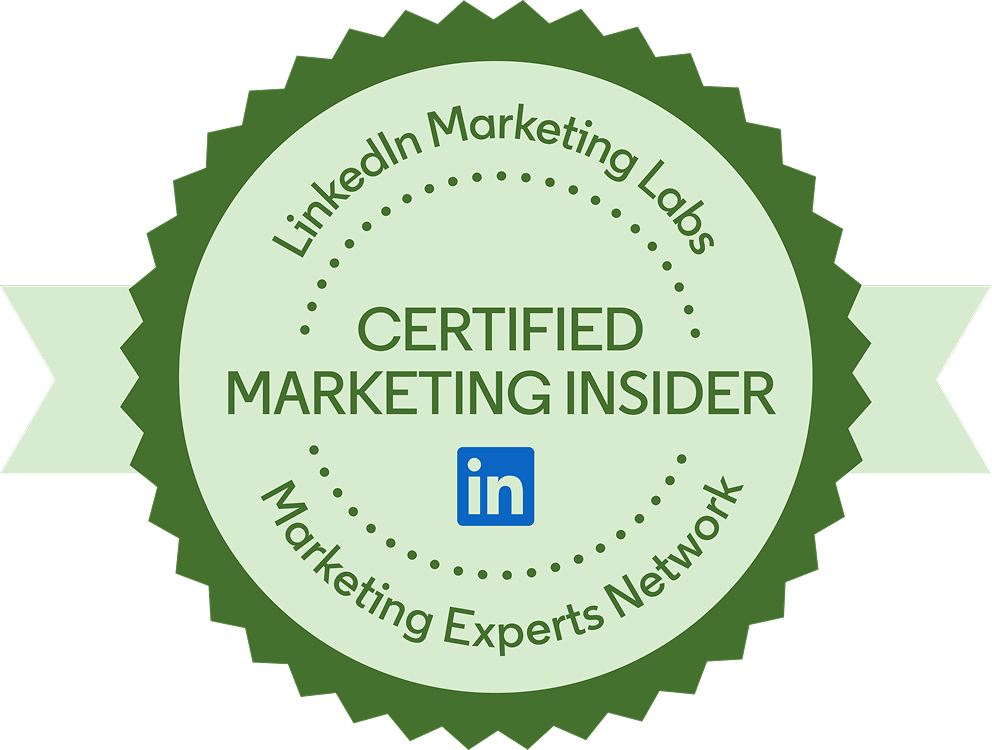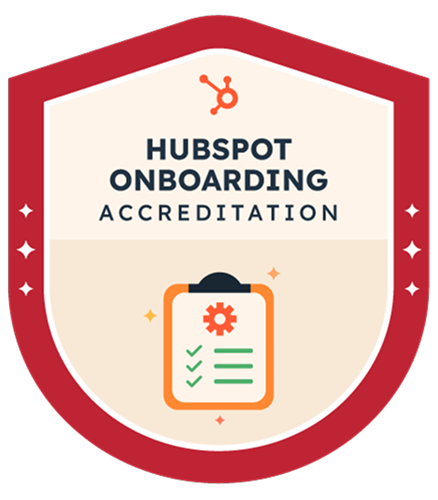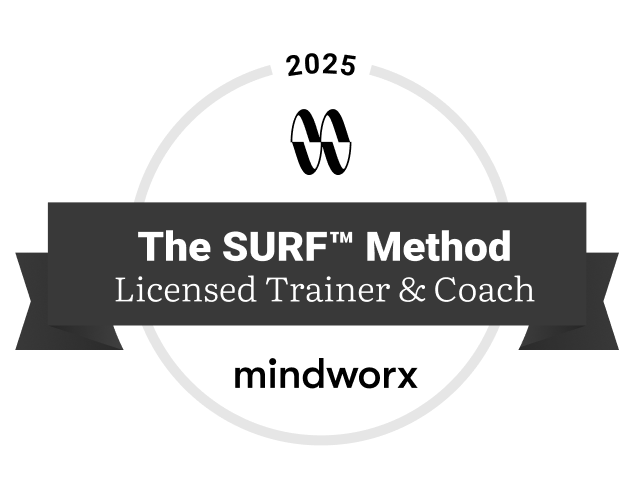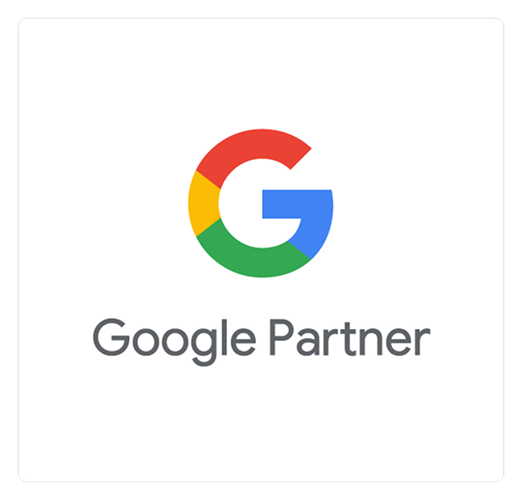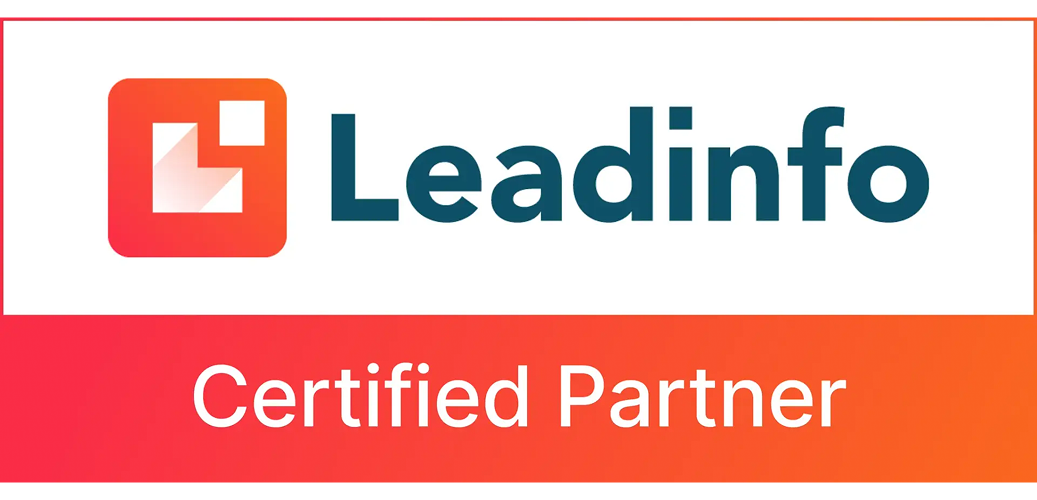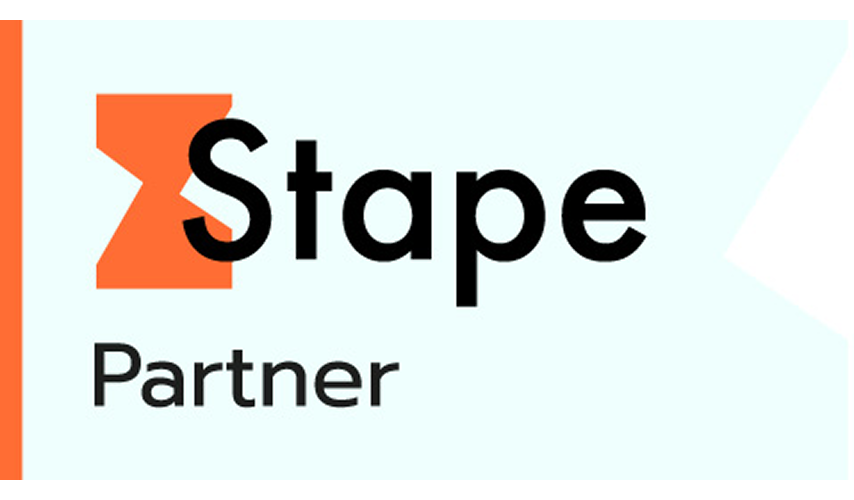To say a lot has changed in the digital world with the introduction of generative AI would be an understatement. Models like Claude, ChatGPT, or Perplexity are transforming how people search, providing customized and synthesized answers matching user intent like no search engine can. (Be honest, how often do you still use Google?) Chatbots are increasingly becoming an essential part of our daily lives and the benefits of AI are impossible to deny: clear, contextualized - though not always correct - information provided to the user in the blink of an eye.
You might ask, and rightly so: how does this impact our digital marketing strategy? If people are increasingly turning to Gemini and ChatGPT instead of search engines, what does it mean for the future of online findability? Are traditional practices like search engine optimization (SEO) dead and should we be optimizing our content for AI instead?
These questions are legitimate. When a new tool is introduced and we don’t know how it will impact us, confusion is more than understandable. The arrival of the internet transformed old-fashioned marketing: print ads, cold calls, and in-person pitches were suddenly joined and in many cases replaced by websites, email campaigns, and SEO. It was overwhelming at first, but early adopters were able to reach wider audiences and measure results more accurately.
Let’s get one thing straight: the shift from SEO to AIO (AI optimization) is no different. No wonder AIO is sometimes referred to as AI SEO. It’s just the next step in the same evolution - and to win at it, we need to tweak our current strategies a bit. We don’t think SEO is dead, we just think the term has now expanded to account for AI mentions and answers in the digital sphere. In this blog post, we will provide an overview of the emerging definitions and our recommendations on how to succeed in this game - including tracking these new metrics. Because AI is not going anywhere.
So, what exactly is AIO?
What is AIO?
In the context of digital marketing, AIO stands for artificial intelligence optimization - the practice of structuring content so that it is more easily understood, evaluated, and promoted by AI-powered systems, particularly large language models (LLMs) like ChatGPT, Gemini, Claude, and AI-driven search engines.
In plain language, this means the AI model will learn about you and your company through consistent, authoritative references. (Sounds familiar - backlinks, anyone?) Best practices in AIO include clearly structured content, direct answers to user questions phrased naturally, and the use of schema markup. These techniques can improve the chances that your content will rank well or be favoured by AI-driven tools. However, they do not guarantee success.
Why? Because nobody knows exactly how this field works - yet.
Since it’s so new, there is a lack of standardized terminology in this space and you will find various, even conflicting definitions online. That’s why we use AIO in this article as an umbrella term for multiple AI-related optimization practices that represent the next phase in SEO’s evolution: AIO, GEO, AEO, and even SXO.
What is GEO?
GEO is an emerging term that stands for generative engine optimization.
If you have recently used Google, you might have noticed that the top result is something they call an “AI Overview”, an AI-generated answer synthesized from various sources meant to help you faster. With GEO, you’re aiming for the inclusion of your content in these AI-generated responses, including those from models like ChatGPT or Perplexity.
Why would you want to get included? Recent data from Ahrefs show that visitors from AI search results convert at a 23x higher rate than traditional organic search visitors. Something that's worth trying, isn't it?
In order to get recommended, the AI model needs to deem you a trusted source. A good way to go about this is building authoritative, clearly structured content that closely matches the user’s query. This increases the chances of the AI tool featuring you in its answer when it scans the web.
For example, if you run a travel agency and want to be recommended when someone asks “What are the best travel agencies for families?”, your GEO strategy would involve creating well-structured blog posts that naturally include phrases like “best family travel agency in [city/country],” “family-friendly tours in [destination],” or “where to book a family holiday in [region].”
This approach improves your chances of being featured in AI-powered answers and search summaries.
SEO vs. AIO
While traditional SEO has focused on technical strategies such as keyword research, backlink building, and optimizing meta tags, it has evolved to prioritize user intent, content structure, and relevance. AIO emphasizes content that is highly structured, directly answerable, and rich in context especially for AI-powered systems and LLMs.
In older SEO practices, keyword stuffing might have helped rankings, but today, search engines penalize this. Instead, AIO focuses on natural language and full-phase queries rather than isolated keywords.
For example, traditional SEO might target the keyword “project management software,” while AIO optimizes for natural, conversational queries such as “What is the best project management software for small teams?” or “How does project management software improve collaboration?” These full-sentence queries are easier for AI tools and LLMs to interpret and use in featured snippets, voice search, or AI-generated answers.
Is SEO still relevant?
Rather than a replacement for SEO, AIO is an evolution of it, reflecting how users now consume information via AI instead of traditional search engines alone. The goal of SEO as we know it is making sure your content ranks high in SERPs (search engine results pages), driving clicks and traffic to your site. With the introduction of AI Overviews and rising zero-click searches, it might seem like this goal is being undermined by AI.
The thing is, AI tools still pull their information from search engines, so to get your content included and discovered, you might as well follow SEO best practices. Many AI models are trained on data from search engines like Google and Bing. Online findability still matters.
Many SEO and AIO recommendations even overlap: quality, comprehensive, and relevant content is key for both, including well-structured articles that use H2 and H3 headers and FAQ sections. Backlinks build authority, which is important for getting included in AI answers and technical factors like site speed, indexability, and mobile optimization remain crucial for search performance.
SEO and AIO are not mutually exclusive - they’re complementary and you shouldn’t discard one in favour of the other.
Key metrics for SEO vs. AIO
Now you know the difference between the terms - but how do you track them?
For SEO, key metrics include organic traffic to your website, the click-through rate (CTR), and keyword rankings. These metrics give you a clear, straightforward picture of how your content performs in traditional search engines and how you stack up against competitors.
With AIO, tracking is a bit less straightforward because the field is still evolving. You’ll want to monitor how much traffic comes from AI-powered platforms and keep an eye on whether your content appears in AI-generated answers or featured snippets. A way to do this is regularly asking AI chatbots questions about your industry or services. Often, it's worth asking the same question but using a different LLM to compare the answers.
Be wary of anyone promising fast results with AIO or GEO. This is a new and fast-changing space, and we’re all still experimenting. Staying informed about the latest trends and doing your own testing is the smartest way to stay ahead and adapt effectively - exactly the growth-focused experimentation we’re all about at SUM Digital.
Semrush, Ahrefs, SE Ranking: how do they track AI mentions already?
At Semrush, they recognize AI Overviews as an important feature of SEO strategies. Their Position Tracking tool allows you to track your website’s visibility in AI Overviews and ChatGPT. They also have a full AI toolkit that lets you analyse your brand’s visibility in AI conversations and see what users usually ask AI about your brand or category.
Similarly, Ahrefs’ Site Explorer has an AI Overview button in its SERP features, allowing you to see how your content performs in these overviews.

In SE Ranking, you can find (a beta version of) their AI results tracker, where they use the term AIO to mean “AI Overview”. You can track various metrics, including the share of keywords for which an AI Overview is shown, which of them mention your website or brand, and which are in the top 3 positions. This tool treats an AI Overview with its text and links as a separate SERP, tracking your presence in it.
Incorporating these metrics in your SEO strategy, or even just monitoring them, ensures you stay up to date with the newest developments in the field and prevents wasting your resources on ineffective tactics that hurt your search performance.
SEO vs. AIO metrics in SE Ranking
If you use SE Ranking, you know that traditional SEO metrics include keyword search volume, keyword difficulty, or organic traffic. These metrics help you understand how well your website is performing in search results and have been key indicators of digital marketing success for decades.
With the introduction of their AI Results Tracker, several other metrics have been introduced to track how often your content is mentioned and recommended by AI. But what exactly do they mean?
AIO presence
This number refers to the percentage of keywords for which an AI overview is shown (from all the keywords tracked). You can identify how many of your target keywords trigger AI Overviews in the SERP and, crucially, how this affects your organic search traffic.
Mentions and links in AIO
SE Ranking also monitors how many of these AI Overviews containing your keywords will feature a link to your website or brand. This metric is important to determine whether AI models see you as a trusted and authoritative source for the selected query.

Top 3 presence
This tool monitors the keywords for which an AI Overview is shown that either link to or mention your website in the top 3 positions, tracking separately your mention and your website link.
How to optimize your content strategy for AI (and humans)
So, how do these insights translate into an actual content strategy? For us, creating high-performing content in 2025 inherently involves a mix of traditional SEO as well as emerging AIO. Below are key strategies to ensure your content is relevant, easily recognizable, and understandable - both for humans and AI tools.
The essentials
- Well-structured content. Use headers (H2, H3), bullet points, FAQ sections, and structured data markup to help both users and AI parse your content easily.
- E-E-A-T principles. Expertise, experience, authoritativeness, and trustworthiness - crucial for building credibility and ranking in both traditional and AI-powered search.
- Conversational, natural language. Expand your keyword research to include actual phrases people search for.
- Technological optimization. Fast page speed, mobile-friendliness and indexability are critical for both SEO and AI visibility.
- Backlinks. Backlinks from reputable sites remain a strong signal of trust in both SEO and AIO contexts.
Do...
- Track both SEO and AIO metrics. Don’t discard traditional keyword rankings altogether, but also stay alert to how your content is picked up by AI tools and AI-generated summaries (for example by using SE Ranking).
- Mention important facts early. AI tools often extract quick answers, so make sure your most important insights are included early in your content.
- Keep on creating valuable long-form content. Focus on relevance, depth, and helpfulness.
Don't...
- Chase every new trend. Be wary of bold claims like “SEO is dead” as well as people promising you instant AIO results.
- Flush your SEO strategy down the drain. Instead, adapt and extend your SEO strategy and build further on it.
AI and the future of digital marketing
Chatbots and generative search tools are reshaping how we access and process information. As organic search traffic declines and AI-driven discovery grows, digital marketing strategies will increasingly shift towards AIO metrics - with the goal of creating content that AI models recognize and recommend.
For now, SEO best practices still matter. Your position in the SERPs has an influence on how easily AI models can find and evaluate your content. While keyword stuffing might not be that relevant anymore, well-structured, relevant content and seamless user experience are still essential. And quality, well-researched human content will continue to outperform generic AI-generated articles - that’s not going to change anytime soon.
SEO and AIO are not polar opposites, but two sides of the same coin. They’re part of the same evolution in how people search and discover content - and in order to succeed, a modern marketer needs both.
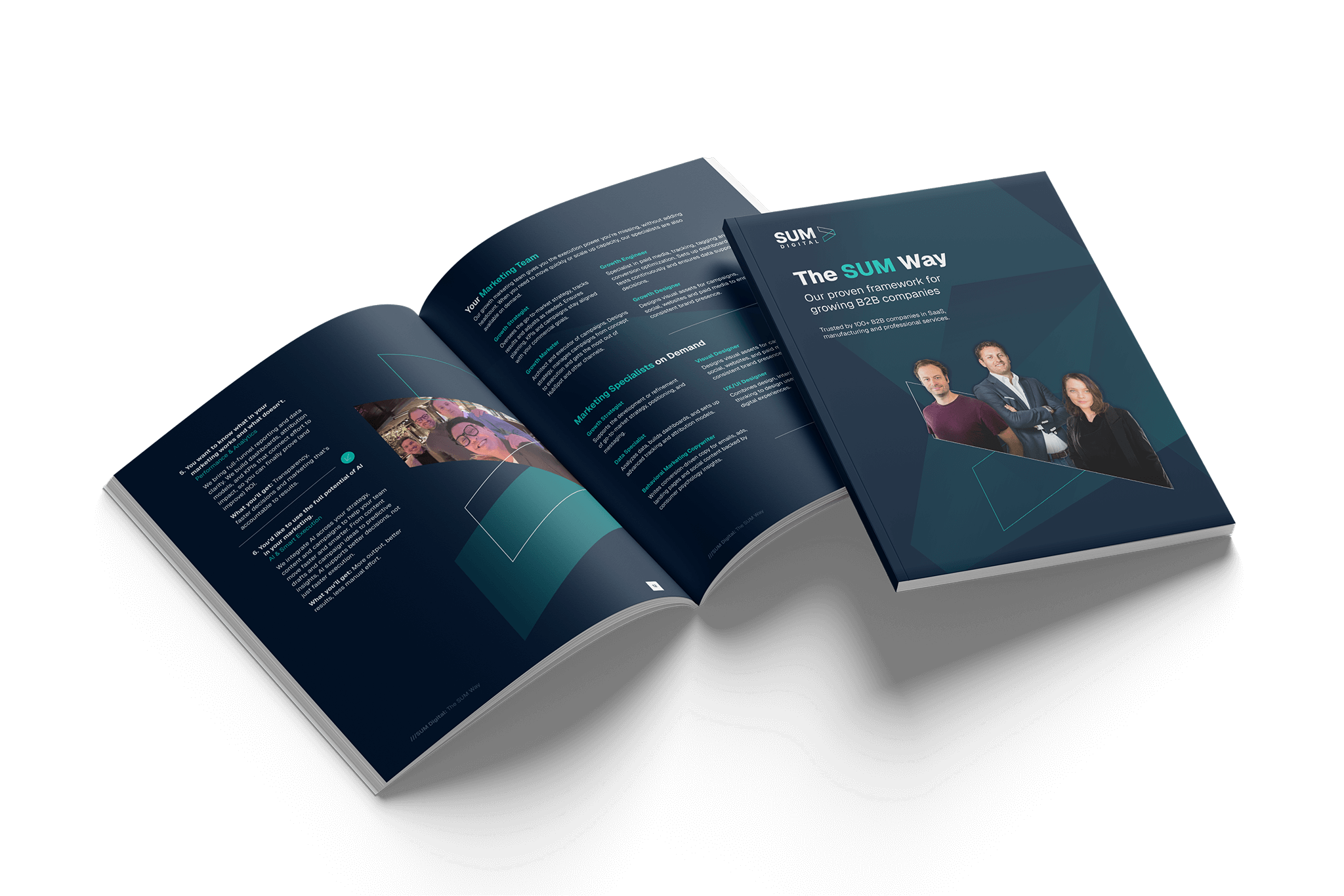
The SUM Brochure
Discover how we think, work and deliver. Inside, you'll find out how our way of working and the SUM Growth Model helps businesses like yours achieve results and grow predictably.

